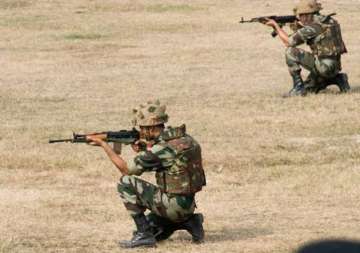New Delhi: In a major revelation on Friday, Comptroller Auditor General of India (CAG) came down heavily upon the defence sector on the issue of ammunition management in Army, saying acute shortage of ammunition was a serious cause of concern directly impairing the operational readiness of the force.
Pulling up the defence ministry in its report tabled in Parliament on Friday, the public account watch dog inferred that if India were to go to war now, 90 per cent of its available ammunition would not last even for 10 days.
"While availability of authorised stock against War Wastage Reserve (WWR) to meet the expected duration of operation formed the basic criteria for ensuring the operational readiness of the Army, we found during the review that against the WWR of 40 (I) days, the availability of ammunition was only in 10 per cent of the total types of ammunition held (March 2013),” the report said.
The CAG also observed that the overall holding had been continuously depleting over the years and was more prominent in high calibre ammunition, adding the percentage of high calibre ammunition, which was critical, ranged up to 84 per cent during the five years period of audit.
“Further, in 50 per cent of the total types of ammunition, the holding was 'critical' i.e., less than 10 (I) days," it said.
The report further warned that the Tejas light combat aircraft (LCA) Mark-I could prove to be the air force's Achilles' heel in battle as it has several shortcomings and does not meet IAF specifications.
The locally-produced fighter, Tejas which was given initial operational clearance two years ago, is riddled with 53 “significant shortfalls” that could compromise its survivability in combat, said a CAG report tabled in Parliament.
Not only that, Indian Air Force (IAF) would be "constrained" to induct the fighter LCA without availability of a trainer model, thereby "adversely impacting pilot training", the auditor body said.
"To tide over the persistent acute shortages, the AHQ had set (1999) a minimum threshold of MARL (Minimum Acceptable Risk Level) 20 (I) days to be achieved first. We found that even after 15 years, the threshold of MARL could not be achieved. The acute shortage was a serious cause of concern directly impairing the operational readiness of the Army," it said.
Slamming the Army, ordnance factories and quality assurance agencies for its lackadaisical approach, the report underlined that while the Army blamed the Ordnance Factories Board (OFB) for delays and slippage, the OFB asked for lesser money from the government than what was required to meet the Army's projections. Seventeen of the import projects initiated in 2013 have not been concluded so far, the national auditor said.
"OFB, which had a limited production capacity vis-a-vis the requirement of Army, accepted the targets for supply of ammunition covered under the Roll on Indent in mutual consultation with AHQ. It, however, failed to supply the accepted quantities, and there was shortfall in 54 to 73 per cent types of ammunition. .
The report also cited the inability of OFB to meet the demand of Army as a major cause for shortage of ammunition.
Latest India News
